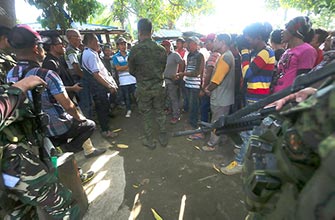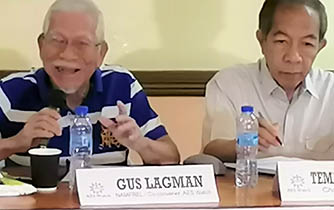Nelson Celis, The Manila Times, Jan. 16, 2019
(AES Watch spokesperson)
Nelson Celis
Part 4
WHY is there a need to change the Comelec Advisory Council (CAC) to a permanent Automated Election System (AES) board?
In the Automated Election System (AES) law of 1997 (Republic Act 8436), it is stipulated therein that the Commision on Elections shall be advised by the CAC to be composed of technical experts from the Department of Science and Technology (DoST), the Information Technology Foundation of the Philippines (ITFP), the University of the Philippines (UP), and two representatives from the private sector recommended by the Philippine Computer Society (PCS). The DoST Secretary usually sat then as the chairman of the CAC.
As their initiative to amend the RA 8436 due to new ways of securing transmission of election results, source code review, digital forensics and new counting technologies at that time, the Technical Working Group (TWG) of the PCS in 2006 brainstormed that the CAC should be led by a government agency whose function is focused on project implementation related to information and communications technology (ICT). At the time, 2004, the Commission on Information and Communications Technology (CICT) was a newly created agency whose function was to promote, develop, and regulate integrated and strategic ICT systems and reliable and cost-efficient communication facilities and services. The CICT was planned as a transitory measure to the creation of a Department Information and Communications Technology (DICT).
With the proposed CICT heading the CAC, the TWG thought that the nitty-gritty of the AES technical matters would then be shouldered by its ICT experts. The other proposed CAC members were representatives from DOST, Department of Education (DepEd), a member representing the academe, and three members representing ICT professional organizations. Such proposed changes in the CAC membership were ratified by the Congress in 2007 and signed into law as RA 9369, the amended RA 8436. Notice that the PCS and the ITFP organizations were removed purposely by the TWG in RA 9369 to give the CAC chair a free hand to choose among the nominated ICT experts from other ICT organizations.
In RA 8436, the CAC functions are implied. Unlike in RA 9369, the functions of the CAC are vividly defined: 1) recommend the most appropriate, secure, applicable and cost-effective technology to be applied in the AES; 2) provide advice/assistance in the review of the systems planning, inception, development, testing, operationalization, and evaluation stages of the AES; and 3) prepare and submit a written report, which shall be submitted within six months from the date of the election to the joint congressional oversight committee (JCOC), evaluating the use of the AES.
In 2017, the second initiative to amend RA 9369 ensued through the team effort of Sen. Dick Gordon’s think tank, National Movement for Free Elections (Namfrel), and AES Watch. The major reasons behind amending it was based on their observations: 1) leadership in the CAC changes every now and then, thus causing disconnect with previous efforts when a new head is appointed; 2) critical CAC recommendations were not carried out by Comelec; 3) all the technical provisions (e.g., digital signatures) of RA 9369 were not implemented in the past three national and local elections; and 4) non-promulgation of the implementing rules and regulations (IRR).
The draft copy of the proposed changes in RA 9369 was already submitted last year to the JCOC for their approval. In the draft, the CAC is proposed to be replaced by a permanent AES board whose members would be composed of the highest-ranking career official of the DICT with senior IT management experience who would act as the chairman; two Comelec commissioners, one of whom is to act as vice chairman of the board with the other as the commissioner in charge of the Project Management Office (PMO); two members representing non-governmental and non-sectarian election monitoring organizations, and maintaining the original number of members from DoST, DepEd, academe and ICT organizations. In contrast, nothing is changed in the functions of the AES board vis CAC.
Why permanent? The intention is to have continuity of what would have been done in the past elections by the AES board. And since the proposed board shall have two Comelec commissioners, their participation in crafting the recommended possible options would have undergone their serious evaluation; of course, with other members of the board. The job of the Comelec en banc, therefore, is just to choose among the recommended alternatives with the two commissioners backing up the recommendations and explaining further the details to the en banc about the rationale behind the options. With the proposed permanent and pro-active AES board, compliance with the amended provisions of the AES law would surely be monitored strictly. The board shall also be in the best position to advise the Comelec in crafting the provisions of the IRR, which has been pending since 1997.
If the Comelec en banc would not consider any of the recommended options, the suggested penal provision might not be palatable to them as it states: Failure of the commission to choose from among the recommendations of the board shall be prima facie evidence of election sabotage and/or dereliction of duties and shall be punishable under this Act, the Revised Penal Code or the Anti-Graft and Corrupt Practices Act (RA 3019).
As a permanent office, the board shall have a secretariat which shall be responsible for its administrative functions. The board, the secretariat and all resource persons engaged by the board, are proposed to be entitled to a just and reasonable amount of compensation chargeable against the budget of the Comelec.
On the other hand, the 2018 draft proposes to change the Technical Evaluation Committee to Technical Evaluation and Certification Committee (TECC). It also proposes to create a credible PMO. Why?
(To be continued)
https://www.manilatimes.net/time-to-change-the-automated-election-law-2/497157/





Leave a Reply